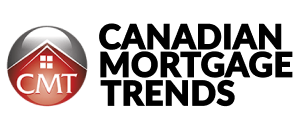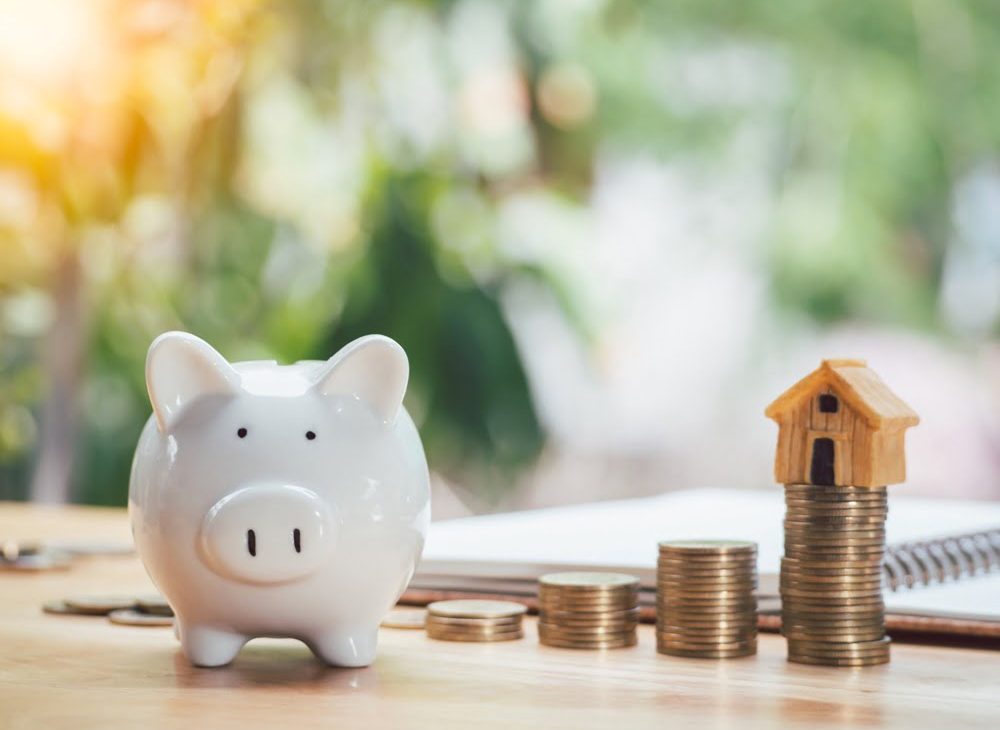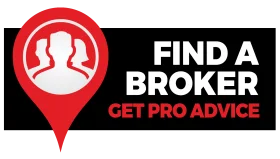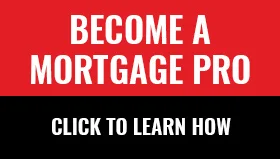A down payment is one of the biggest hurdles when purchasing a home, and it’s often the largest upfront cost buyers face. In fact, a recent survey by Mortgage Professionals Canada found that 60% of buyers couldn’t afford their home without help. Understanding how much you’ll need for a down payment, effective ways to save, and knowing what assistance is available can make all the difference in achieving homeownership.
Below, we’ll break down the essentials to help you navigate this important step.
Table of Contents
What is a down payment?
A down payment is the money you pay upfront in cash when you buy a home. It’s subtracted from the cost of the home, and your mortgage covers the difference. The mortgage is paid off over time, typically through monthly, bi-weekly, or weekly payments.
Down payments are mandatory to buy a home, but they can be challenging to save for. How much you’re able to put toward a down payment affects the price of the home you can buy, your mortgage size, and your monthly payments.
How much do you need for a down payment?
The amount you need for a down payment depends on Canada’s mortgage guidelines, the price of the home you’re buying and the requirements of your mortgage lender.
Here is a table which shows the minimum down payment based on the price of the home you’re purchasing:
| Purchase price of your home | Minimum amount for a down payment | Calculation |
|---|---|---|
| $500,000 or less | 5% of the purchase price | Multiply final sale price by 0.05 |
| $500,000 to $999,999 | 5% of the first $500,000 of the purchase price -10% for the portion of the purchase price above $500,000 | Multiply first $499,999 by 0.05, then multiply the remaining amount by 0.1 and add the two resulting numbers together |
| $1.5 million or more | 20% of the purchase price | Multiply final sale price by 0.2 |
If you have poor credit or are self-employed, lenders may require a higher percentage for your down payment.
Impact of down payment size
A larger down payment reduces the size of your mortgage, saving you thousands in interest over the life of your loan. It also influences key aspects of your home purchase:
- Mortgage insurance: If your down payment is less than 20%, you are required to purchase mortgage default insurance. However, as of December 15, 2024, the federal government will allow insured mortgages for homes valued up to $1.5 million (up from $1 million), enabling buyers to make smaller down payments on higher-priced homes.
- Home price: More expensive homes require larger down payments. With the increased insured mortgage cap, buyers in high-cost markets like Toronto and Vancouver will have more options.
- Mortgage size: A higher down payment lowers the total mortgage and monthly payments, reducing your interest costs over time.
Mortgage default insurance
If your down payment is less than 20% of the home’s purchase price, you are required to purchase mortgage default insurance, available from either CMHC, Sagen or Canada Guaranty, to protect the lender in case you default on the loan. This insurance enables you to buy a home with a down payment as low as 5%, but it comes at an additional cost, as the premium is either paid upfront or rolled into your mortgage payments.
The premium you pay is calculated as a percentage of the total mortgage amount, and it varies based on the size of your down payment. The lower the down payment, the higher the percentage applied to the mortgage. Here’s a general breakdown of the premiums:
- 5% down payment: You’ll pay a premium of 4% of the mortgage amount.
- 10% down payment: You’ll pay a premium of 3.1%.
- 15% down payment: You’ll pay a premium of 2.8%.
Although this insurance adds to your overall cost, it allows homebuyers to enter the market with a smaller initial investment. It’s important to note that mortgage default insurance is not required if your down payment is 20% or more, which can save you the cost of these premiums. Additionally, mortgage default insurance is mandatory for high-ratio mortgages in Canada but is typically only required for homes valued at less than $1 million. Homes priced at $1 million or more require a minimum 20% down payment and are not eligible for mortgage default insurance.
Provincial tax is applied to the mortgage insurance premium and must be paid at closing. This tax varies by province and is separate from the premium itself.
Saving for a down payment
According to data from Mortgage Professionals Canada, the average down payment made by all buyers in 2023 was $70,378. This money can come from a variety of sources, including savings, gifts and/or withdrawals from investments.
In 2023, the top sources for down payment funds were:
- 58% personal savings
- 8% gifts from parents or other family members
- 4% loan from parents or other family members
- 7% withdrawal from RRSP
- 2% other sources
While down payments can be an intimidating amount of money to come up with, the earlier you start saving, the easier it will be. Here are some tips to start saving for a down payment:
- Budgeting. The first thing you should do to start saving is to do a cash flow analysis and identify any areas you could reduce costs to save more money. This could mean making sacrifices like eating out less, holding off on upgrading devices or driving a less expensive vehicle. You could also consider cutting out vacations to prioritize saving for your down payment.
- Automate savings. After you’ve reviewed your budget, a great way to prioritize your down payment is to automate your savings so that a portion of your paycheck goes directly to your savings account every month before you get the chance to spend it.
- Reduce your debt. Another way to free up more cash in your budget is to pay off debt like student loans or credit card debt. Then you can contribute the money you would normally put toward monthly payment and/or interest toward saving for your down payment. It’s best to pay of high-interest debt like consumer debt first so you lose less money to interest.
Federal down payment savings programs
When saving for a down payment, several investment vehicles and government programs can help maximize your savings, especially for first-time buyers. Here are the key options:
Savings Vehicles
- Tax-Free Savings Account (TFSA): You can invest money tax-free up to an annual limit. Withdrawals, including any earned interest, are also tax-free, making it a flexible option for saving toward your down payment.
- Registered Retirement Savings Plan (RRSP): While primarily designed for retirement savings, the Home Buyers’ Plan (HBP) allows first-time homebuyers to withdraw up to $35,000 tax-free ($70,000 for couples) from their RRSP to fund a down payment. The withdrawal must be repaid within 15 years to avoid tax penalties.
- First Home Savings Account (FHSA): Launched in 2023, the FHSA combines the tax benefits of an RRSP and TFSA. Individuals can contribute up to $8,000 annually, with a lifetime cap of $40,000. Contributions are tax-deductible, and withdrawals made for purchasing a home are tax-free.
You can speak with your financial institution about setting up one of these accounts.
Government Programs
- First Home Savings Account (FHSA): As mentioned above, the FHSA offers a tax-efficient way to save for a first home, making it a highly recommended tool for first-time buyers.
- Home Buyers’ Plan (HBP): This program allows first-time buyers to use funds from their RRSP for a down payment without tax penalties, as long as it’s repaid over 15 years.
- First-Time Home Buyers’ Incentive (FTHBI) – (Discontinued): Previously, this program allowed buyers to share home equity with CMHC in exchange for a 5-10% contribution to their down payment. It was discontinued in 2024, with the final application deadline on March 21, 2024.
Provincial down payment assistance programs
Many provinces in Canada offer down payment assistance programs targeted at specific populations, regions, or first-time homebuyers. These programs are primarily designed to help people purchase their primary residence and are typically not available for properties intended for rental, seasonal, or recreational use. Below are examples of assistance programs across various provinces:
Alberta
- Attainable Homes Calgary (AHC). This program is available for Calgary residents to help them afford a down payment on a home. The program requires that buyers contribute $2,000 and then the program will cover the remainder of the 5% down payment. The loan will be interest-free, however, AHC will have a partial stake in your home when you sell it. It is available for Calgary residents with a combined household income of below $131,424 who intend to live in the home full-time and don’t own any other houses. You can start the process by filling a questionnaire which will connect you with a mortgage professional who can discuss your options with you.
Manitoba
- First-time home purchase program. This program is for Métis citizens living in Manitoba. The Louis Riel Capital Corporation will contribute a 5% down payment up $18,000 as well as helping with closing costs of 1.5% of the purchase price up to a maximum of $2,500. See their website for more details about eligibility and how to apply.
- Down payment assistance. This program is to help home buyers in Manitoba afford a down payment. There are two components to this program:
- 10% is a forgivable loan that you won’t need to repay if you own the home for longer than 5 years.
- The 15% or 25% amount can be forgiven after 15 years as long as you continue to live in the home. To qualify for the 25% loan, you must have a combined household income of less than $46,500.
If you sell your home before the loan is forgiven, you will have to pay part of the loan back to Manitoba Housing. For details on how to apply, you can visit their website.
Ontario
- Region of Waterloo affordable home ownership. This program offers down payment assistance of 5% of the purchase price of an eligible home. The income threshold is accurate at $109,000, and the maximum home price is $600,000. However, note that the down payment assistance is interest-free and forgivable after 20 years if no default events occur (e.g., selling the home before 20 years or moving out). If you sell the home earlier, you may need to repay the loan, plus 5% of the capital appreciation. For more information about eligibility and how to apply, you can visit their website.
- Affordable homeownership program Simcoe County. This program is designed to help renters in Simcoe County who don’t have enough savings to put toward a down payment. The program provides down payment assistance of 10% of the home’s purchase price up to a maximum of $50,000. A key detail is that after 20 years, the loan is forgiven if you’ve lived in the home without selling or refinancing. If you sell earlier, repayment is required To apply, you can fill out their application form.
Quebec
- Accès Condos. This program offers help with condo purchases by providing a percentage of the purchase price toward your down payment, with an initial deposit as low as $1,000. The program does involve shared equity, meaning the SHDM (Société d’habitation et de développement de Montréal) will have a stake in the home when you sell. For more information and details about the application, you can visit their website.
New Brunswick
- Home ownership program. This program offers financial assistance to help low- to moderate-income families in New Brunswick become homeowners. Eligible participants can receive a repayable loan to cover part of the purchase price of their first home. Here are key details:
- Loan amount: The program provides a loan that covers 40% or more of the home’s purchase price, with a maximum loan of $75,000.
- Income threshold: Applicants must have a household income of $40,000 or less to qualify.
- Repayment: The loan is repayable unless the home is sold before a set period. If the home is sold before the loan is forgiven, a portion of the loan must be repaid.
- Eligibility: This program is primarily targeted at first-time homebuyers and supports those purchasing a home as their primary residence. It is not available for rental, seasonal, or recreational properties.
- For more detailed eligibility criteria and information on how to apply, click here.
Nova Scotia
- Down payment assistance program. This program helps home buyers in Nova Scotia afford a down payment on their first home. Buyers can get a loan of up to 5% of the purchase price of the home, which is repayable over a 10-year period interest-free. To be eligible, you must have a combined household income of under $145,000. You can apply by filling out the application form and sending it to the Department of Municipal Affairs along with any supporting documents.
Prince Edward Island
- Down payment assistance program. This program helps first-time home buyers afford a down payment on a home. Applicants can receive a conditionally interest-free loan for up to 5% of the purchase price up to a maximum of $17,500. To be eligible for the program, applicants can have a combined household income of below $100,000 and the purchase price of the home must be $350,000 or less. You can apply online on the Government of Prince Edward Island website.
Down payment myths and misconceptions
- Myth: You need a 20% down payment to buy a home.
- Fact: While a 20% down payment can help avoid needing to pay for mortgage default insurance and lower monthly payments, depending on the cost of the home you’re purchasing, you may be able to have a down payment as low as 5%.
- Myth: Bigger down payments are always better.
- Fact: While a larger down payment can lower your monthly payments and eliminate additional costs from mortgage default insurance, it’s not always the best use of your funds. Consider your overall financial situation, other debt and investment opportunities before deciding to put more money down.
Frequently Asked Questions (FAQ)
- Can I buy a home with no down payment?
No, in Canada, you cannot get a mortgage without a down payment. By law, all home purchases require at least a 5% down payment. However, depending on your location and circumstances, there are financial assistance programs available that can help you gather the funds needed for a down payment, such as provincial down payment assistance programs or the federal First-Time Home Buyers’ Incentive.
- Is a down payment the same as a deposit?
No. A deposit is money provided when making an offer on a home to demonstrate to the seller that you are serious about purchasing the property. It’s usually submitted when the offer is accepted but is separate from the down payment. A down payment is the portion of the home’s purchase price that you pay upfront once your offer is accepted, and it is applied toward the total cost of the home.
- Why do lenders require a down payment?
Lenders require a down payment to reduce their risk. By making a down payment, borrowers show that they are financially invested in the property and capable of managing their finances. It also lowers the loan-to-value ratio, which minimizes the lender’s exposure in case of default. A larger down payment typically results in more favourable loan terms and reduces the overall cost of borrowing.
Last modified: October 11, 2024




